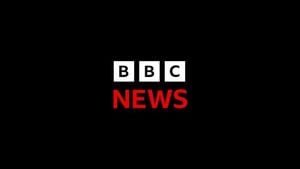South Korea’s economy is facing a new wave of inflationary pressure, with consumer prices rising at their fastest pace in more than a year, according to data released on November 4, 2025. The Ministry of Data and Statistics reported that the consumer price index (CPI) climbed 2.4% in October compared to the same month last year. This marks an acceleration from the 2.1% increase recorded in September and is the most rapid uptick since July 2024, when inflation reached 2.6%. The latest figure surpassed the median forecast of 2.2% from a Bloomberg survey of economists, catching some market watchers off guard.
What’s behind this jump? According to Bloomberg, a weaker South Korean won has driven up the cost of imported energy and food, squeezing household budgets and raising the stakes for policymakers. Shoppers at places like Cheongyangni Market in Seoul are feeling the pinch, as everyday essentials become more expensive. The government’s data also showed that, on a month-to-month basis, prices increased by 0.3% in October, outpacing economists’ expectations of no change. The inflationary surge is prompting renewed debate about the Bank of Korea’s (BOK) next move on interest rates, especially as the country grapples with a rally in housing prices and a volatile foreign exchange market.
For the third consecutive month, the BOK opted to keep its key interest rate steady at 2.50%. This decision comes amid an upswing in property prices—a trend that has policymakers worried about asset bubbles and financial stability. As reported by Reuters, the central bank’s cautious stance is directly tied to these inflation and property market dynamics. "In our base case, we continue to believe the BOK's rate-cutting cycle has already ended for now at 2.50%," said Kim Jin-wook, an economist at Citigroup Inc. Kim added that he expects prices of agricultural products and services to face deflationary pressures after the holiday season, suggesting that some relief could be on the horizon for consumers.
Even so, the immediate outlook remains uncertain. BOK Governor Rhee Chang-yong revealed that a majority of the central bank’s seven-member board remains open to a possible rate cut within the next three months. However, market consensus, as reflected in the latest analyst polls, is for one more rate cut in November 2025, followed by a prolonged pause. This delicate balancing act—between supporting economic growth and keeping inflation in check—is at the heart of the central bank’s current strategy.
The inflation spike is especially significant given the broader context of South Korea’s economy. The country has long prided itself on maintaining price stability, but recent global trends have complicated that task. The won’s depreciation against the dollar has made imports pricier, particularly energy and food, two essentials that directly affect consumers’ wallets. This, in turn, has reinforced the BOK’s decision to pause its monetary easing cycle, at least for now, as it seeks to cool off a red-hot housing market and guard against further inflationary shocks.
According to the Ministry of Data and Statistics, the October inflation rate was the fastest since July 2024, when prices jumped by 2.6%. The fact that the current rate exceeded both the September figure and analyst expectations suggests that inflationary pressures may be more persistent than previously thought. Economists had predicted a 2.1% rise for October, but the actual outcome was notably higher. The month-on-month increase of 0.3% also beat forecasts, underscoring the momentum behind rising prices.
For ordinary South Koreans, the effects are tangible. At local markets, shoppers report spending more on basics like rice, vegetables, and cooking oil. Energy costs have also climbed, with electricity and gas bills reflecting the weaker won’s impact on import prices. These trends are not unique to South Korea—many countries are grappling with the fallout from currency fluctuations and supply chain disruptions—but they are particularly acute here due to the country’s reliance on imported goods.
The BOK’s response so far has been measured. By holding rates steady for three months running, the central bank is signaling its intent to avoid stoking further inflation while also keeping an eye on the housing market. Property prices have been on the rise, raising concerns about affordability and the potential for speculative bubbles. The volatile dollar-won exchange rate adds another layer of complexity, making it harder for policymakers to chart a clear course.
Governor Rhee Chang-yong’s comments reflect this uncertainty. While the board is open to a rate cut in the near future, there is no consensus yet on when—or even if—that will happen. The median expectation, according to Reuters, is for a single additional cut in November, followed by an extended pause. This approach gives the BOK flexibility to respond to changing conditions, but it also means that households and businesses must navigate a shifting economic landscape.
Looking ahead, some analysts see reasons for cautious optimism. Kim Jin-wook of Citigroup notes that after the holiday season, prices for agricultural products and services could come under downward pressure, potentially easing overall inflation. However, much depends on external factors such as global commodity prices and exchange rate movements. If the won continues to weaken, import costs could remain elevated, complicating efforts to bring inflation back to target levels.
Policymakers are acutely aware of these risks. The government and central bank have both emphasized the need for vigilance, especially given the interplay between inflation, interest rates, and the housing market. A premature rate cut could reignite price pressures, while keeping rates too high for too long might dampen economic growth. It’s a classic policy dilemma—one that requires careful calibration and constant monitoring.
For now, South Korea’s inflation story is one of caution and watchfulness. The latest data has reinforced the case for maintaining a steady hand on monetary policy, at least until there are clearer signs that price pressures are abating. As households adjust to higher costs and policymakers weigh their options, the coming months will be crucial in determining the trajectory of the country’s economy.
With inflation running at its fastest pace since mid-2024 and the central bank treading carefully, South Korea finds itself at a crossroads. The decisions made in the next few months will have far-reaching implications—not just for financial markets and property owners, but for every consumer navigating the rising cost of living.




